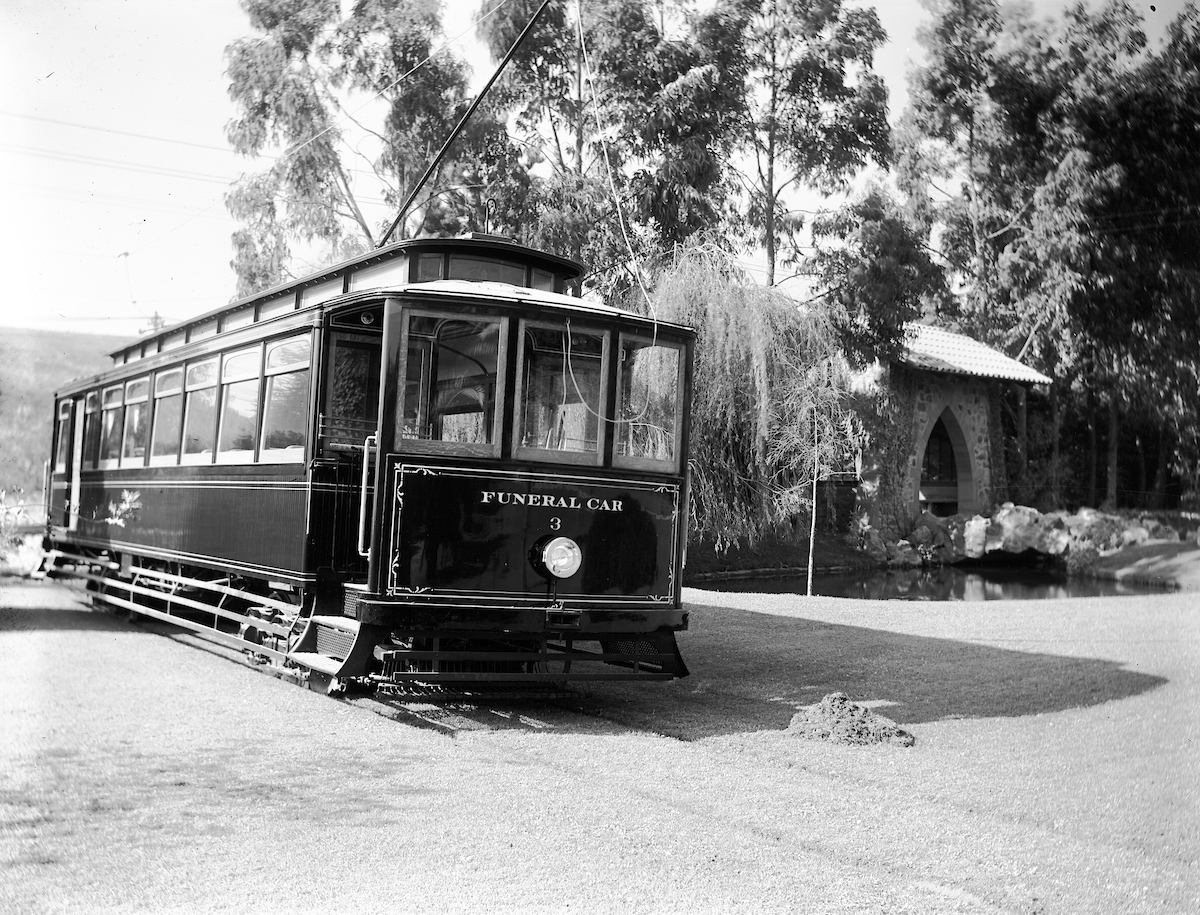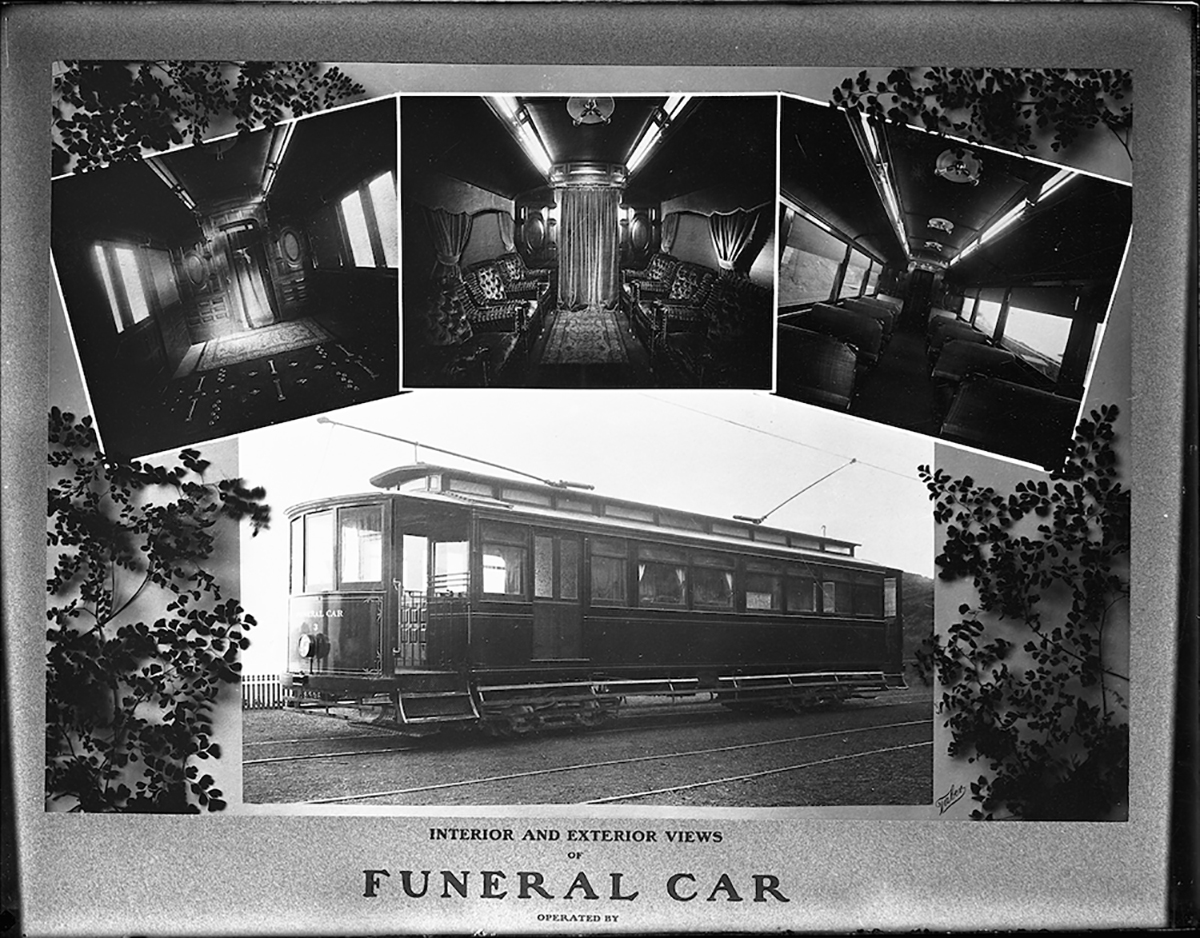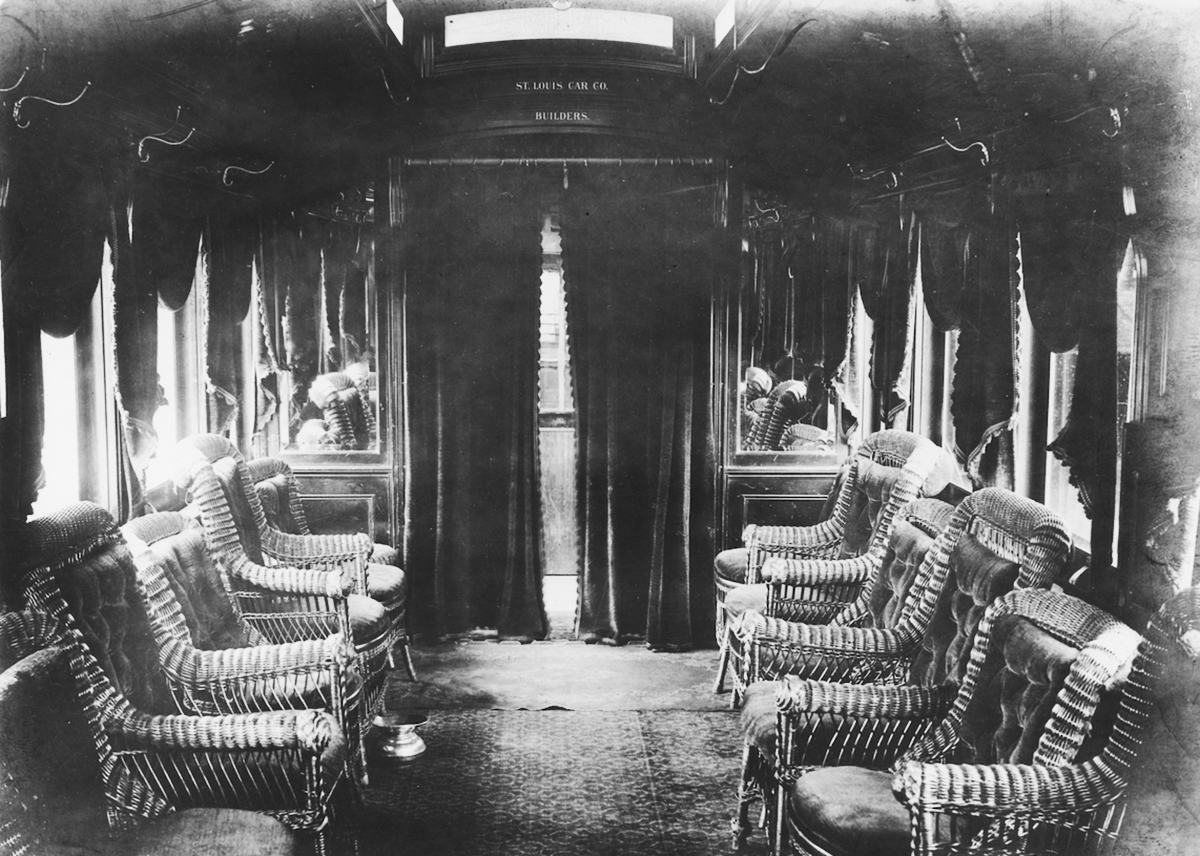Popular Posts
Translate
Home Top Ad
Contact Form
A Streetcar Line to the Underworld
By Jeremy Menzies
This Halloween we would like to take you back in time for a look at the story of San Francisco's long lost funeral cars. As you may know in ancient Greek mythology, the deceased pass into the underworld aboard a boat crossing the River Styx. In early 19th century San Francisco, the macabre service of "Funeral Streetcars" swapped the River Styx for the County Line and the boat for a streetcar.

This 1905 shot shows United Railroads Funeral Car #3 on a spur track inside Olivet Memorial Park. URR had several spurs into cemeteries like Woodlawn, Cypress Lawn, and Holy Cross off the main line that ran down El Camino Real and Mission Road.
In 1900, the city had outgrown many of its early graveyards and officially outlawed new burial grounds within city limits. As a result, cemeteries just over the county line in Colma (later dubbed the "City of the Silent") rapidly grew with both new burials and graves relocated to outside the city. San Francisco residents wishing to inter their loved ones had few options for traveling to Colma. As roads were not well maintained, the journey by horse and carriage was long and difficult, and passenger rail service did not conveniently accommodate transporting a casket with funeral goers.
Shortly after its formation in 1902, the United Railroads Company (URR) expanded upon the area's first funeral car service, which was run by the San Francisco & San Mateo Electric Railway. Capitalizing on the demand for safe, efficient travel to and from the cemeteries, the company built up a five-car fleet of specialized cars to operate increased service by 1904. This service followed the 14 Mission and 40 San Mateo lines along Mission Street to Daly City and then via El Camino and Mission Road to the necropolis of Colma.

This is a photo-collage showing the amenities of URR's Funeral Car service from 1911. Photos at the top show the casket compartment, the comfortably furnished family compartment and the larger compartment to seat extended family and other mourners.
URR's new funeral cars were far from your standard electric streetcar but instead were beautiful coaches painted on the outside in a deep green with brick red colored roofs, oak window sashes, and gold lettering and numbers. Finished on the inside for the comfort of both the living and the dead, the cars had three compartments-- one to carry the coffin, a lavishly furnished one for family or close associations, and a nicely appointed larger seating compartment for general mourners. Riders were surrounded by wood paneling with heavy drapes and blinds for privacy as well as cushioned wicker chairs in the luxury family compartment. Some of the cars even featured lead inserts in the wheels and gears to make for a quieter, softer ride.

Velvet-cushioned wicker chairs fill the special luxury compartment of Funeral Car #3 in this 1905 shot. Note the heavy curtains, mirrored panels, decorative rugs, and even a nicely polished spittoon providing mourners with a comfortable trip to the graveyard.
As automobiles began to gain a larger foothold and the roads to the graveyards were improved, income from the funeral service began to decline. As early as 1908, URR cut down the number of cars assigned to the service and by 1921, the death bell tolled for URR's funeral cars. The end of funeral service also meant the end of the line for the last three cars to provide funeral trips and by 1926 all three were scrapped.
Want to dig deeper into San Francisco's graveyard history? Check out the SF Public Library's exhibit "Don't Disturb the Dead" on the 5th floor of the Main Branch. Or for those who like a side of exercise with their history nuggets, Shaping San Francisco is hosting a biking tour of several Colma cemeteries on Sunday, November 3rd from 1-3pm. See more funeral car photos on the SFMTA Photo Archive website and follow us on Instagram!
Published October 31, 2019 at 06:16PM
https://ift.tt/2C1NV6Z
Popular Posts


0 Comments